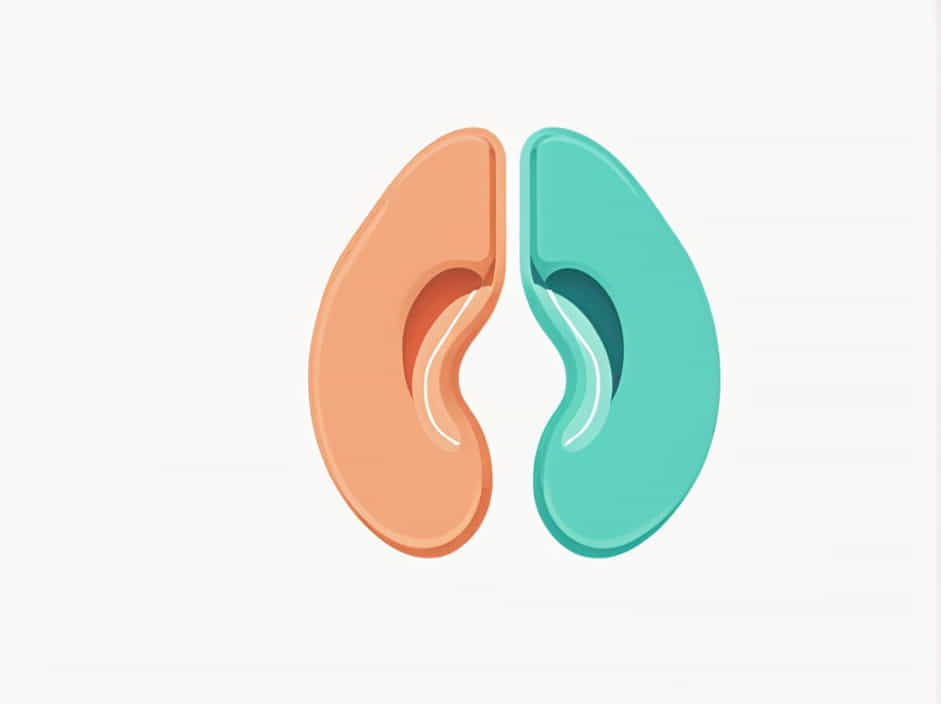The kidneys are vital organs responsible for filtering waste from the blood, balancing electrolytes, and regulating blood pressure. Their anatomical position in the body is crucial for understanding their function and interaction with surrounding structures.
One common question about kidney anatomy is whether they are located inside or outside the peritoneum. This topic explores the position of the kidneys in relation to the peritoneum, their surrounding structures, and their significance in medical studies.
What Is the Peritoneum?
The peritoneum is a thin, protective membrane that lines the abdominal cavity and covers most of the abdominal organs. It has two layers:
- Parietal peritoneum – Lines the walls of the abdominal cavity.
- Visceral peritoneum – Covers the surface of internal organs.
The space between these layers is called the peritoneal cavity, which contains a small amount of fluid to reduce friction between organs.
Where Are the Kidneys Located?
The kidneys are located in the retroperitoneal space, meaning they are behind the peritoneum rather than within the peritoneal cavity.
1. Retroperitoneal Position of the Kidneys
The kidneys are not covered by the visceral peritoneum, which means they are positioned outside the peritoneal cavity. Instead, they are embedded in fat and connective tissue that protect and support them.
They are located:
- On either side of the spine, between the T12 and L3 vertebrae.
- Behind the peritoneum, in the posterior abdominal wall.
- The right kidney is slightly lower than the left due to the position of the liver.
2. Why Are the Kidneys Retroperitoneal?
The kidneys need stable positioning and protection from movement inside the abdomen. Being retroperitoneal ensures that they are:
- Less exposed to injury from external forces.
- Anchored firmly to surrounding structures.
- Not affected by changes in the peritoneal cavity.
Surrounding Structures of the Kidneys
Several structures surround the kidneys, providing support and protection:
1. Renal Fascia
A thin, fibrous layer that holds the kidneys in place and separates them from surrounding organs.
2. Perirenal Fat
A layer of fat that cushions the kidneys and protects them from trauma.
3. Adrenal Glands
Located on top of each kidney, these glands produce hormones like adrenaline and cortisol.
4. Blood Vessels
- Renal arteries supply oxygenated blood to the kidneys.
- Renal veins carry filtered blood back to the heart.
5. Ureters
Thin tubes that transport urine from the kidneys to the bladder.
Functions of the Kidneys in Their Retroperitoneal Location
The kidneys perform several essential functions, and their retroperitoneal position supports these processes:
1. Filtration of Blood
The kidneys filter waste, toxins, and excess fluids from the blood to form urine.
2. Regulation of Fluid Balance
They maintain hydration levels by adjusting the amount of water excreted in urine.
3. Electrolyte Balance
They help control the levels of sodium, potassium, calcium, and other electrolytes.
4. Blood Pressure Regulation
By releasing renin, a hormone that regulates blood pressure, the kidneys help maintain circulatory stability.
5. Production of Red Blood Cells
They release erythropoietin (EPO), a hormone that stimulates red blood cell production.
Medical Conditions Related to Kidney Position
Because the kidneys are retroperitoneal, certain medical conditions specifically affect their function and structure.
1. Kidney Stones
Hard deposits of minerals and salts can form in the kidneys, causing pain and difficulty urinating.
2. Polycystic Kidney Disease (PKD)
A genetic disorder where fluid-filled cysts develop, affecting kidney function.
3. Nephroptosis (Floating Kidney)
A rare condition where a kidney moves excessively due to a lack of support.
4. Pyelonephritis (Kidney Infection)
A bacterial infection that causes inflammation and pain in the kidneys.
5. Kidney Trauma
Since the kidneys are located behind the peritoneum, they are somewhat protected, but severe trauma (e.g., from accidents or injuries) can still damage them.
How to Keep the Kidneys Healthy
Maintaining kidney health is essential for overall well-being. Here are some tips to protect them:
1. Stay Hydrated
Drinking enough water helps flush out toxins and prevents kidney stones.
2. Eat a Balanced Diet
Limiting salt, processed foods, and excessive protein reduces the strain on the kidneys.
3. Control Blood Pressure and Blood Sugar
High blood pressure and diabetes are leading causes of kidney disease. Managing them protects kidney function.
4. Exercise Regularly
Physical activity helps improve circulation and prevents obesity-related kidney issues.
5. Avoid Excessive Painkillers
Overuse of NSAIDs (like ibuprofen and aspirin) can damage kidney tissues over time.
6. Get Regular Checkups
Routine blood and urine tests can detect kidney problems early.
The kidneys are retroperitoneal organs, meaning they are located behind the peritoneum rather than inside the peritoneal cavity. This position provides stability, protection, and efficiency in carrying out vital functions like blood filtration, fluid regulation, and waste removal.
Understanding their location and role in the body helps in diagnosing and preventing kidney-related diseases. Keeping them healthy through proper hydration, a balanced diet, and regular medical checkups ensures they function optimally for a lifetime.
